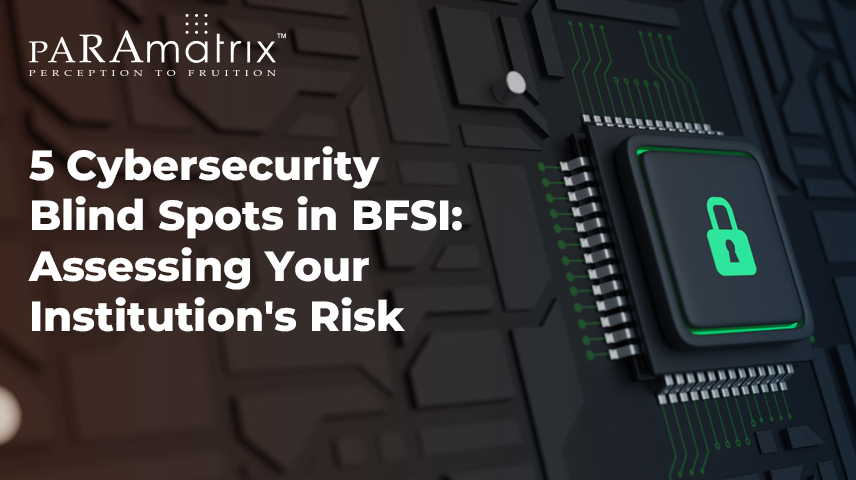5 Cybersecurity Blind Spots in BFSI: Assessing Your Institution's Risk
July 19, 2024

In the era of digital transformation within the Banking, Financial Services, and Insurance (BFSI) sector, cybersecurity has become a paramount concern. Despite substantial investments in security measures, financial institutions continue to face significant cyber risks. According to the 2021 X-Force Threat Intelligence Index by IBM, the finance and insurance sector was the second most attacked industry, accounting for 23% of all attacks observed. This article highlights five frequently overlooked vulnerabilities that may compromise an institution's security posture.
1. Third-Party Vendor Risk Management
While many institutions focus on internal security measures, third-party vendors often represent an underestimated risk. A 2020 survey by the Ponemon Institute found that 53% of organizations have experienced a data breach caused by a third party. In the financial sector, this risk is even more pronounced, with the 2020 Verizon Data Breach Investigations Report noting that 64% of breaches in the financial industry involved external actors.
2. Employee Cybersecurity Awareness
Human error remains a significant factor in cybersecurity incidents. The 2022 Verizon Data Breach Investigations Report revealed that 82% of breaches involved the human element, including social attacks, errors, and misuse. In the financial sector specifically, the report found that 30% of breaches were caused by internal actors. This underscores the critical need for comprehensive, ongoing cybersecurity training programs for all levels of staff.
3. Legacy Systems and Shadow IT
The persistence of outdated technology and unauthorized software usage presents significant security challenges. A 2019 survey by Accenture found that 43% of banks globally still rely on COBOL, a programming language that predates modern cybersecurity threats. While system upgrades require substantial investment, they pale in comparison to the average cost of a data breach in the financial sector, which according to the 2021 IBM Cost of a Data Breach Report, stands at $5.72 million globally.
4. Mobile Banking Security
With projections indicating mobile banking users will exceed 3.6 billion globally by 2024 (Juniper Research, 2020), the associated security risks are escalating. A 2020 study by Intertrust found that 77% of financial apps have at least one serious vulnerability that could lead to a breach of financial data. Financial institutions must prioritize robust security measures in their mobile offerings to mitigate these growing risks.
5. Incident Response Preparedness
In the event of a cyber attack, a swift and effective response is crucial. However, the 2021 Cyber Resilient Organization Study by IBM found that only 39% of organizations globally have incident response plans that are applied consistently across the enterprise. In the financial sector, where trust is paramount, this lack of preparedness can have severe consequences.
These identified blind spots represent significant vulnerabilities in many financial institutions' cybersecurity frameworks. As the digital landscape continues to evolve, it is imperative for BFSI organizations to proactively address these often-overlooked areas of risk.
Financial institutions are encouraged to conduct thorough assessments of their cybersecurity strategies, with particular attention to these potential blind spots. In an industry where trust and security are paramount, comprehensive risk management is not just a regulatory requirement, but a competitive necessity.
For expert guidance on addressing these cybersecurity challenges and implementing robust, tailored solutions for the BFSI sector, visit paramatrix.com. Paramatrix offers cutting-edge cybersecurity services designed to protect financial institutions from evolving threats and ensure compliance with industry regulations.